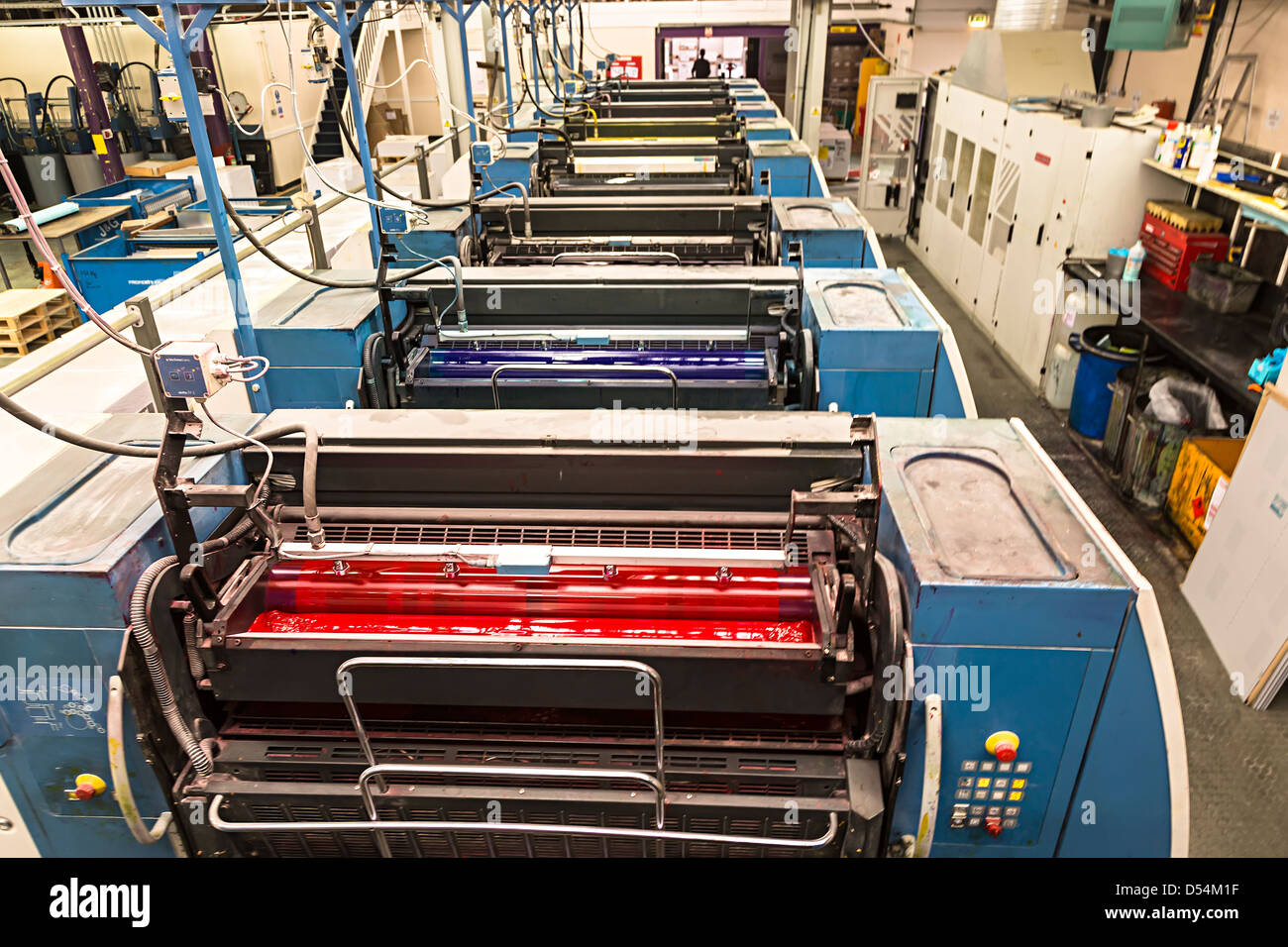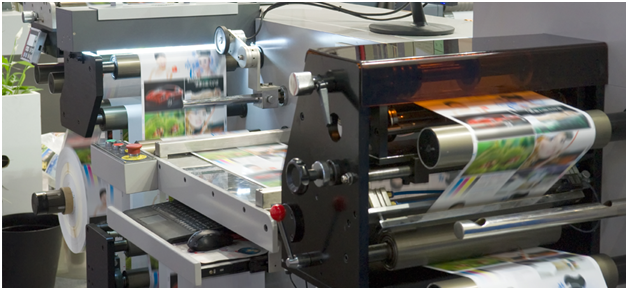A Comprehensive Overview to Comprehending Litho Printing Methods
The world of litho printing, a technique originating from the late 18th century, is a fascinating mix of background, art, advancement and scientific research. This thorough guide will certainly untangle the intricacies of this printing method, from the composition of litho inks to the difficulties encountered in modern applications. As we venture right into the intricacies of lithography, the value of automation and sustainability in ensuring its future significance comes to be increasingly clear. Stick with us as we trip right into the captivating realm of litho printing.
The Historic Advancement of Litho Printing
The historical trajectory of litho printing, a pivotal innovation in the world of communication, is a captivating story of human ingenuity. The process developed with the advent of the rotating press, which substantially boosted efficiency. Each stage of litho printing's advancement showcases mankind's ruthless pursuit of efficiency and top quality in visual communication.
Translating the Science Behind Litho Printing Inks
Moving onward in the expedition of litho printing strategies, the focus now shifts to the scientific research behind litho printing inks. The make-up of these inks, their drying out procedure, and color mixing strategies form the foundation of this complicated art type. Understanding these elements is vital to mastering the craft and achieving the preferred print results.
Composition of Litho Inks
In lithographic printing, the fundamental role of litho inks can not be overemphasized. The composition of litho inks differs depending on its objective, yet normally, they contain 2 major elements - pigments and cars. Pigments, the color-providing components, are carefully ground particles put on hold in the vehicle, a liquid that brings the pigment onto the printing surface. The lorry is an intricate combination of oils, solvents, and resins, which affect the ink's drying out time, adhesion, and gloss. In addition, various additives exist to enhance specific homes like flow, drying out, and resistance to environmental effects. Each element plays a vital part in the last print's top quality, making the exact formula of litho inks a complex scientific research.
Ink Drying Refine
From the composition of litho inks, focus transforms to the fascinating process of ink drying. The drying process is essential, as it impacts the final print's top quality and durability. 2 primary approaches are made use of in litho printing: oxidative drying out and absorption. Oxidative drying includes the ink responding with oxygen airborne to develop a difficult, dry movie. This approach gives a durable coating, yet can be slower contrasted to absorption. Absorption, on the other hand, includes the ink leaking into the paper fibers, which is a faster process yet can bring about much less vivid shades. The option between these methods is dependent upon factors such as print rate requirements, the paper type utilized, and the wanted coating.
Shade Combining Techniques
While the drying out procedure plays a key role in litho printing, the science of color blending methods holds equal significance. This is a complex procedure that includes the careful blending of primaries: cyan, magenta, and yellow, in varying percentages to attain a large range of hues. The enhancement of black ink, understood as 'key', aids in controling the intensity and deepness of the shades. The science behind litho printing inks additionally takes into consideration the transparency of the ink, which affects exactly how colors overlay and mix. To attain an efficient shade mix, print experts must also recognize the ins and outs of ink habits, color concept, and the physical residential or commercial properties of the substratum on which the ink is applied.
The Art and Design Aspects in Litho Printing
Litho printing takes a breath life into art and layout with its unique elements. The process entails producing an image on a lithographic sedimentary rock plate or steel plate with a these details smooth surface. The picture is after that published onto a tool, typically paper, by moving the ink from the plate. What sets litho publishing apart is its ability to duplicate intricate styles with high integrity, making the result almost identical to the original artwork. This is accomplished with using different line methods such as hatching, cross-hatching, and stippling, which enable a series of tonal results. Litho printing suits a selection of colors, allowing musicians to create dynamic and vivid prints. This combination of accuracy and convenience makes litho printing a favored choice for lots of artists and designers.
Modern Applications of Litho Printing Strategies
Litho printing methods have located substantial usage in the modern-day business sector. Its influence and significance continue to expand with the introduction of brand-new technologies and technologies in the area. This section will certainly explore these contemporary applications and the transformative function they play in the printing industry.
Business Litho Printing Makes Use Of
In today's digital age, one could wonder about the relevance of standard printing methods. Litho printing remains a critical part of the business field. High-volume printing jobs, such as the manufacturing of publications, newspapers, and product packaging, count on litho printing for its capability to deliver premium picture top quality and cost performance. The process, which includes transferring a tattooed photo from a plate onto a rubber covering and then to the printing surface, provides unmatched consistency. This makes it excellent for jobs needing a big print run. Litho printing also supplies a broad shade range, above that of digital printing. This makes it the best option for tasks that demand dynamic, top notch shade reproduction.
Advancements in Litho Printing
Pushing the boundaries of traditional techniques, modern advancements have actually sustained a host of developments in litho printing. One popular advancement is digital litho printing, which incorporates the virtues of electronic technology with litho's high-quality output. These advancements underscore the enduring significance of litho printing in the modern-day world.
Checking out the Refine of Litho Printing: Action by Step
Difficulties and Solutions in Contemporary Litho Printing

Regardless of the accuracy and practice that litho printing proudly maintains, it is not without its collection of contemporary Website difficulties. The most common issues include the high preliminary arrangement cost, difficulty in printing variable information, and ecological concerns due to chemical usage. Nonetheless, solutions are emerging as innovation advances. Digital litho printing enables cost-effective short runs and simple personalization, resolving the issue of variable data. Environmentally-friendly inks and safer plate-making processes reduce environmental problems. In addition, innovations in automation have reduced labor expenses, additionally equalizing the lithography procedure. Therefore, while there are difficulties, the litho printing sector is proactively adjusting to fulfill them head-on, guaranteeing its importance in the future.
Verdict
In verdict, litho printing, with its abundant history and scientific details, holds a substantial location in the print industry. As the guide discloses, it's a synthesis of art and innovation, with contemporary developments ensuring its importance. Nonetheless, the market faces challenges that call for cutting-edge services, with a focus on automation and sustainability. The future of litho printing pivots on its capacity to adjust to these changing needs, verifying its enduring worth in a progressing market.
